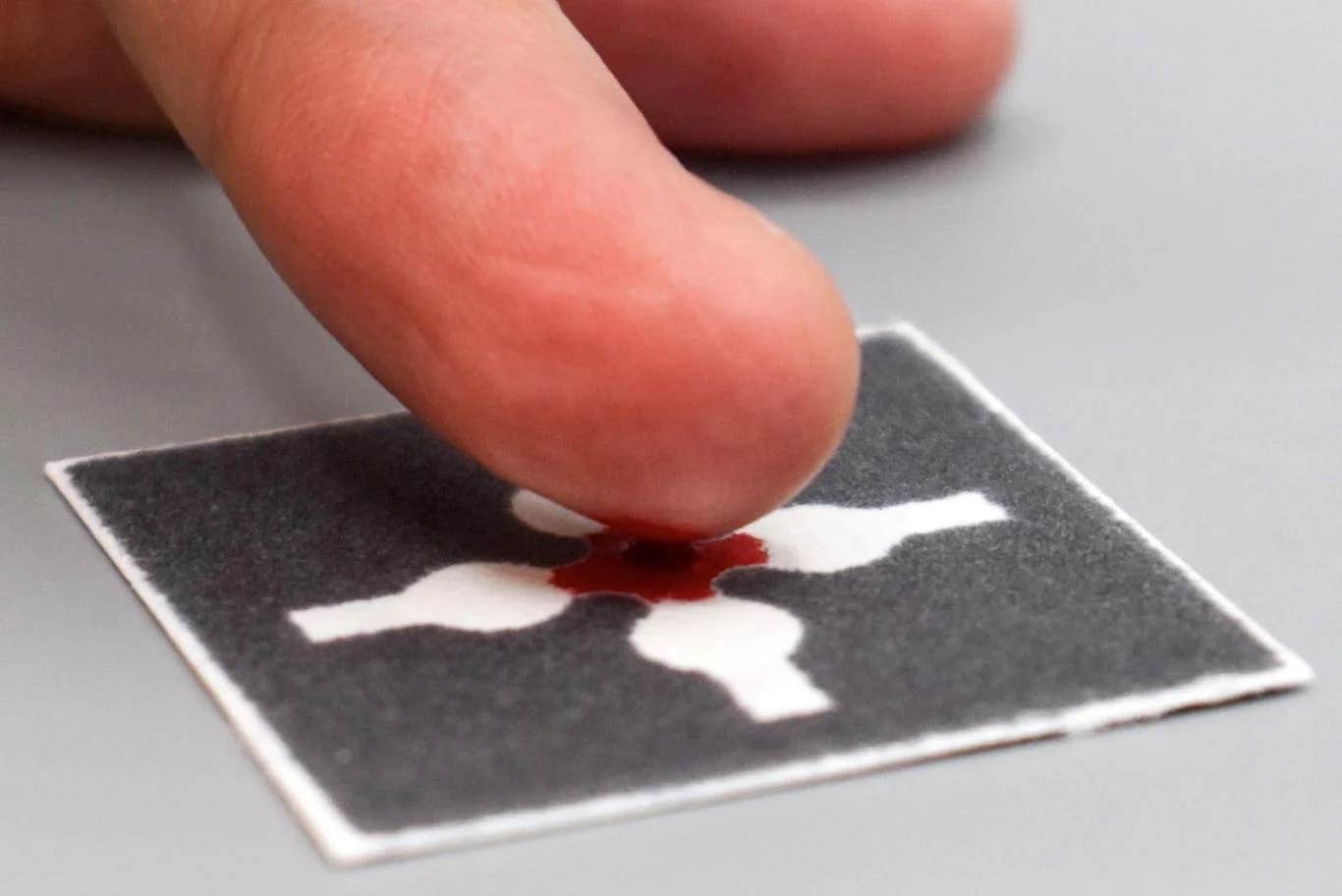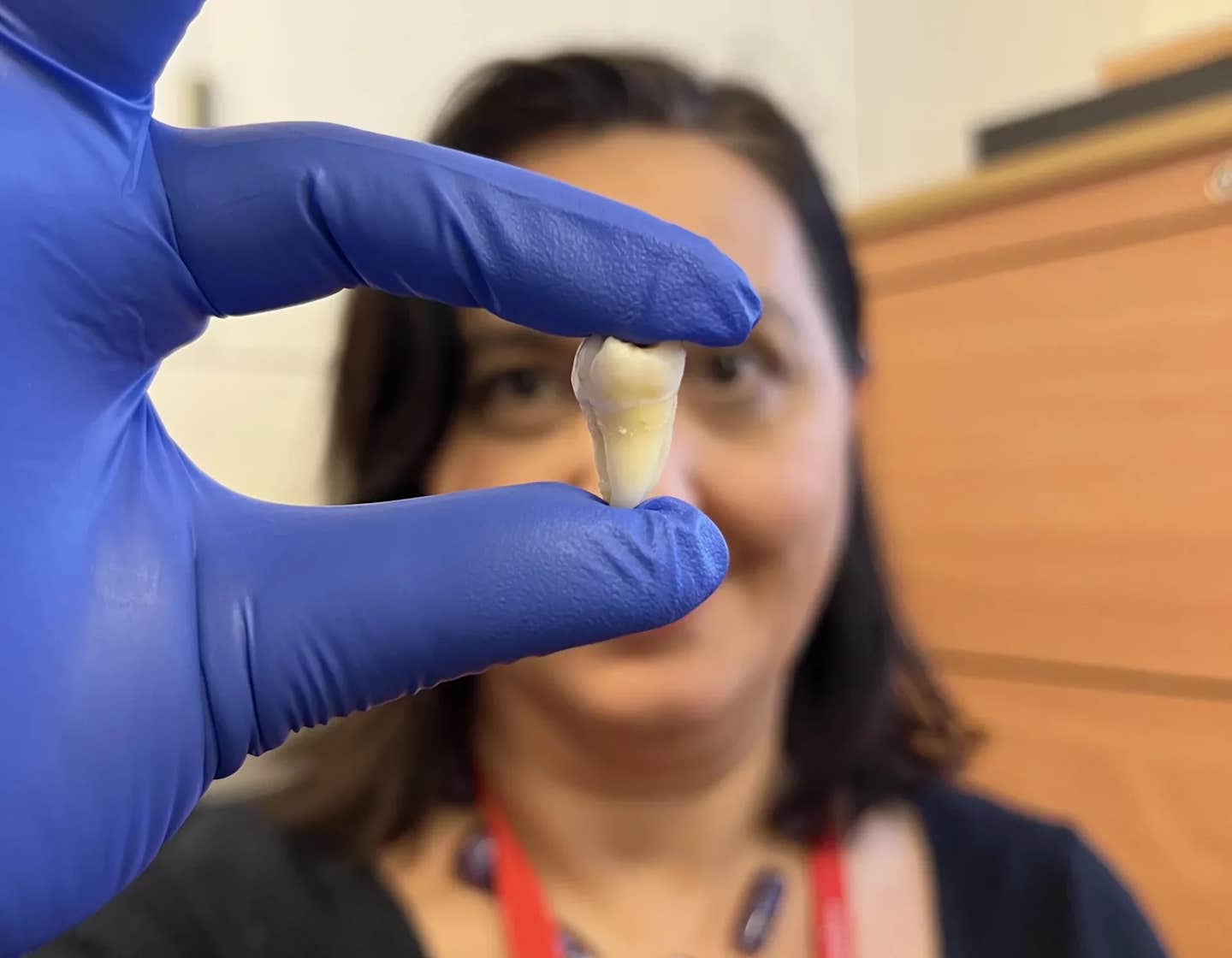Revolutionary paper sensors easily track personal health and environmental safety
Novel inexpensive, shelf-stable, easy-to-use tests bring lab-level precision to the home and field

Only a simple finger prick is needed to provide a sample, which can be mailed to a lab for white blood cell counts and other measurements. (CREDIT: Charlie Mace)
Researchers at Tufts University have devised innovative paper-based tests that could revolutionize how we monitor personal health and environmental safety. These tests eliminate the need for expensive equipment and can be conducted anywhere, making them accessible to a wider population.
One of these groundbreaking technologies is the paper analytical device, developed by Charlie Mace, an associate professor of chemistry at Tufts University. Mace's team created a patterned dried blood spot card, engineered with channels and collection zones that accurately measure defined volumes of blood.
Collect blood at home with a simple finger prick
This device allows users to collect blood at home with a simple finger prick, eliminating the need for clinic visits. The dried blood spots can then be mailed to a lab for analysis, where the amount of DNA unique to white blood cells is measured to determine the cell count.
Upon contact with sweat, the lactate-responsive dots change color from yellow to dark red as a sign of lactate concentration, while the nonreactive reference circles in each corner provide markers to correct for lighting artifacts when the color intensities are measured using a phone camera. (CREDIT: Silklab)
Mace highlighted the significance of this technology, particularly for populations with limited access to healthcare. He emphasized its potential applications in detecting various health indicators, including infections and markers of wellness. Through local collaborations, Mace's work has already reached regions such as South Africa and Ghana, demonstrating its global impact.
Another notable innovation comes from Fiorenzo Omenetto, a professor of engineering at Tufts University, and his team at the Tufts University Silklab. They developed a paper analytical device capable of measuring lactate levels in sweat.
Lactate measurements can indicate oxygen deficiency and serve as a predictor of mortality in trauma patients, making this technology valuable for athletes and individuals in physically demanding occupations.
Related Stories:
Omenetto utilized bioreactive inks derived from silk fibroin, combined with enzymes that process lactate, to create paper tabs that change color based on lactate concentration in sweat.
These tabs are applied to the skin and the color changes are measured using a smartphone camera, providing accurate results comparable to laboratory equipment.
Sensors that measure elements in sweat
Elisabetta Ruggeri, who led the development of the paper devices, emphasized their long shelf life and potential for expanding to measure other elements in sweat, offering a comprehensive health profile.
Addressing water quality concerns, Sameer Sonkusale, a professor of electrical and computer engineering at Tufts University, and the Tufts University Nano Lab, devised a paper analytical device capable of detecting bacterial contamination in water.
This device uses gold nanoparticles attached to an antibiotic that binds to gram-negative bacteria, causing a color change when bacteria are present. A smartphone camera and an app called ColorAssist allow for easy measurement of bacterial levels in water samples.
Furthermore, the researchers incorporated a collection zone for detecting nitrite, another harmful contaminant in water, demonstrating the versatility of the paper device. Sonkusale highlighted the significance of these inexpensive and easy-to-use water quality tests, particularly for monitoring water in remote areas with limited sanitation infrastructure.
A paper card with multiple sample channels can detect bacterial contamination in water supplies using a color change detection app on a smartphone. It can also be used at home to detect urinary tract infections. (CREDIT: Sameer Sonkusale)
Moreover, Sonkusale's paper device has potential health applications beyond water quality testing, including the detection of urinary tract infections. He emphasized the importance of early detection in preventing infections from progressing to sepsis, particularly among vulnerable populations.
The development of paper-based analytical devices by Tufts University researchers represents a significant advancement in healthcare monitoring and environmental safety. These low-cost and accessible technologies have the potential to improve healthcare access and address critical issues such as water quality worldwide.
For more science and technology stories check out our New Innovations section at The Brighter Side of News.
Note: Materials provided above by the The Brighter Side of News. Content may be edited for style and length.
Like these kind of feel good stories? Get the Brighter Side of News' newsletter.
Joshua Shavit
Science & Technology Writer | AI and Robotics Reporter
Joshua Shavit is a Los Angeles-based science and technology writer with a passion for exploring the breakthroughs shaping the future. As a contributor to The Brighter Side of News, he focuses on positive and transformative advancements in AI, technology, physics, engineering, robotics and space science. Joshua is currently working towards a Bachelor of Science in Business Administration at the University of California, Berkeley. He combines his academic background with a talent for storytelling, making complex scientific discoveries engaging and accessible. His work highlights the innovators behind the ideas, bringing readers closer to the people driving progress.



